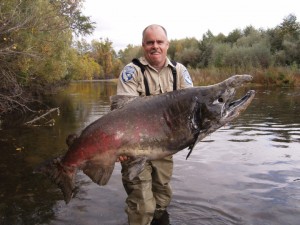Always-provocative Editor & Publisher columnist Steve Outing proposes that publishers need to change their definition of news. Those Twitter and Facebook feeds that stream information about what your friends are having for lunch? That’s news, Outing says. Only most professional editors don’t consider it that. If information doesn’t have a wire-service imprimatur or at least the watermark of a professional writer, it doesn’t quality as news.
But guess what? Customers don’t care. To them, advice from friends is at least as valuable as advice from a news pro. The popularity of social networks and Twitter attests to that. Professional publishers need to tap in to this phenomenon, but they’re too addicted to conventional definitions of news to make that happen, Outing suggests. They’re missing the boat and the market is passing them by.
Outing nails it. For a great perspective on the popularity of social networking read this piece on “ambient intimacy” from the International Herald-Tribune. Clive Thompson explains the value of sustaining relationships through casual awareness of what others are doing.
Twitter and the Facebook News Feed bring new breadth to this concept, enabling people to glimpse others’ lives through occasional insights into their everyday activities. This intimacy becomes addictive. People who initially reject the News Feed as too intrusive or the constant stream of Twitter chatter as too overwhelming often find themselves drawn in to the point that monitoring the stream becomes engrossing. It’s an experience that appeals to basic human instincts.
The 18-year-olds who log on to Facebook 15 times a day are telling us something. Their friends network is their news stream. As we all know by now, they are rejecting packaged media in favor of a jumbled, unpredictable gush of information from all kinds of sources. They choose who to listen to. If publishers aren’t in the news stream, they’re irrelevant. Outing is proposing that publishers could be the source of the news stream, mixing packaged content from professional sources with ambient chatter from individuals. Of course, Facebook is already pretty well entrenched, but it’s not very localized. Publishers could still transform their websites into something more than a print archive with a few blogs wrapped around it.
Miscellany
More layoffs at the Boston Globe. This time, 42 people in the advertising, circulation, marketing and production departments lost their jobs, or a little less than 2% of the 2,450-person workforce. That’s a bloodbath, says the hyperbolic headline in rival Boston Herald, which should know about bloodbaths. No newsroom jobs were cut. The ranks of the idled reportedly include several senior managers, although no one named names. The Boston Phoenix has the memo from Globe publisher Steve Aimsley. The Globe‘s website is now also reporting to the Globe instead of to The New York Times, which kind of makes sense. And in unrelated news, the newspaper’s truck driver’s union rejected an offer of a 5% pay cut and less vacation. The Globe reported the fourth-worst percentage circulation decline among the top 25 US newspapers in the most recent numbers from the Audit Bureau of Control.
 The Redding (Calif.) Record Searchlight is laying of 12 people, or about 6% of its workforce. No newsroom jobs were affected and the publisher says the paper’s financial position is strong. Read the delightfully random comments from readers, who attribute the layoffs to everything from the Bush administration to yellow journalism, although not to the 85-lb. salmon carcass that is the paper’s most e-mailed story of the day.
The Redding (Calif.) Record Searchlight is laying of 12 people, or about 6% of its workforce. No newsroom jobs were affected and the publisher says the paper’s financial position is strong. Read the delightfully random comments from readers, who attribute the layoffs to everything from the Bush administration to yellow journalism, although not to the 85-lb. salmon carcass that is the paper’s most e-mailed story of the day.
Reuters says the outlook is worsening for Canadian newspapers. Ad revenue at the Toronto Star fell 8.5% in the most recent quarter on top of an 18% jump in newsprint prices. Canwest, which is Canada’s biggest publisher of daily newspapers, can cut back print runs of the National Post daily in western provinces. The Canadian dollar is off more than 20% in the past year, which can’t help.
There are rumors that the Jackson (Miss.) Clarion-Ledger is planning more layoffs in early December, even as it invests in a new lifestyle website that will show pictures of all the bars in town. Jackson Free Press Editor Donna Ladd sums up: “So there’s money for drunk pictures, but not for news coverage.” Well, what the heck is wrong with that, Donna? Commenters pile on. Ladd says the C-L Scroogishly cancelled the $50 holiday bonus and is asking staffers to pay for coffee while hardwood floors are installed in the publisher’s office.
Did you know US News & World Report is going to go monthly? We didn’t even know it was still around.
News After Newspapers says what we’ve been saying for two years about the outlook for the newspaper industry, but the author sees hope in a new class of product.
And Finally…
This isn’t news, at least as professional editors define it, but the Top 10 Strangest Coincidences on 2Spare.com is worth the waste of time. In fact, the whole site is a time sink. You can get lost for hours. We don’t know how much of the information is true, but this is the Internet and you shouldn’t believe what you read, anyway.
Comments
This entry was posted on Friday, November 7th, 2008 at 8:20 am and is filed under Facebook, Google, Hyper-local, Solutions. You can follow any responses to this entry through the RSS 2.0 feed. Both comments and pings are currently closed.



[…] Paul Gillin over at NewspaperDeathWatch.com did a blog item about the column, “Your Friend Feed Is News,” published just […]